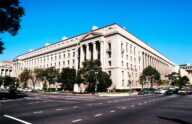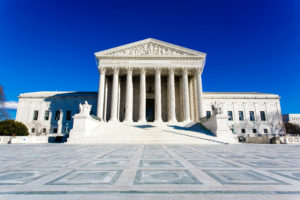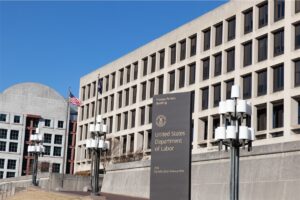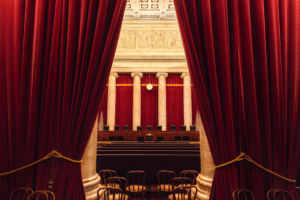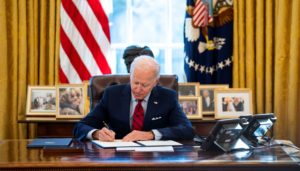Bloomberg Law: Courts’ Chevron Deference to Agencies Should Go to the Landfill
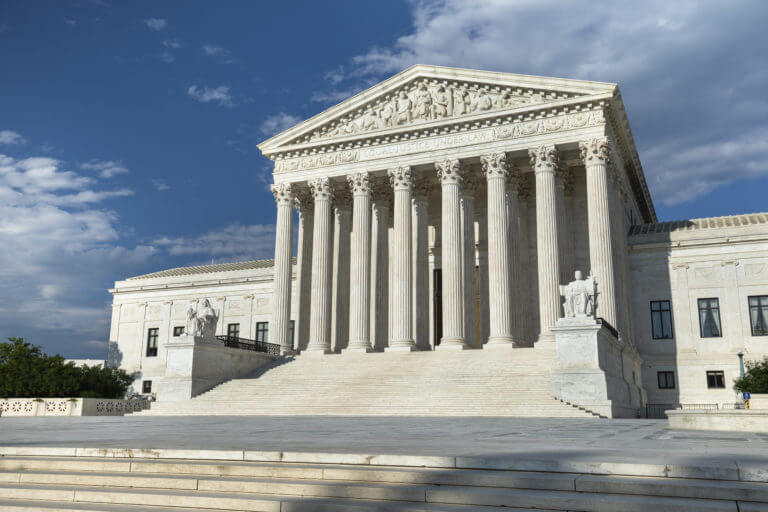
On May 1, the US Supreme Court granted certiorari in Loper Bright Enterprises v. Raimondo, which is sure to send shockwaves through the administrative state. At issue is the doctrine known as Chevron deference, which requires that courts defer to federal agency interpretation of statutes. It sounds like legalese, but in practice, Chevron deference serves as a superhighway for administrative abuse.
In 1984, Chevron v. NRDC was expected to be a sleeper case. But Justice Department lawyers saw a way to ensure that government would nearly always win in future litigation. Professor Thomas Merrill, for example, who was Deputy Solicitor General in the DOJ at the time, called Chevron an “accidental landmark,” and jokingly described himself as the Deputy Solicitor General “for Chevron.”
The DOJ has pushed for a muscular Chevron deference in the courts starting in the late 1980s. And Chevron went largely unquestioned by the courts for decades.
From the mid-2010s onwards, the Supreme Court started signaling the constitutional invalidity of Chevron deference. The DOJ, perhaps desiring to perpetuate Chevron, seemingly adopted a two-face strategy to preserve Chevron deference. While the government continued to ask the lower courts to apply Chevron, when those cases ended up at the Supreme Court, the DOJ treated Chevron as a liability, and downplayed and even disavowed deference.
The result is that the court has not had an opportunity until now to rule on the continued validity of Chevron deference. Meanwhile, the lower courts, especially the D.C. Circuit, have continued to embrace Chevron despite the high court’s obvious skepticism.
All that changed with the Loper Bright case. The Supreme Court, rejecting other options, granted certiorari on the question of whether Chevron deference should be overruled or clarified.
Chevron deference was illegitimate the day it was decided: it is inconsistent with the Constitution, the Administrative Procedure Act, and traditional tools of statutory interpretation.
“Chevron compels judges to abdicate the judicial power without constitutional sanction,” Justice Clarence Thomas wrote in 2020. It undermines the duty of judges to say what the law is. And it gives federal agencies unconstitutional judicial or legislative power.
Imagine if you were in a car accident and go to court to resolve who is at fault. If the person who hit you were to say, “I win because the court is required to defer to my interpretation of traffic laws,” I’m sure you would react negatively. That is what Chevron deference does. It rejects fairness, the due process of law, and the Constitution’s separation of powers, and requires judges to acquiesce to the views of one of the litigants before it for no other reason than that it is the government.
In this way, Chevron deference requires judges to be partial to and biased in favor of the government’s statements of law—undermining judges’ ability to be impartial decisionmakers.
Chevron deference also ignores the APA, the cornerstone of administrative procedure in the US. The APA requires the court to “decide all relevant questions of law.” Chevron ignores what Congress—the people’s representatives and the repository of our democracy—has said on the topic, and instead aggrandizes what unelected bureaucrats have to say about their own misuse and abuse of power.
Finally, Chevron is inconsistent with “accepted principles of statutory interpretation from the first century of the Republic,” as Thomas put it. Citing the 1841 United States v. Dickson, Thomas described how, when courts disagreed with the executive’s interpretation, they gave no weight to it. As Justice Joseph Story wrote in Dickson, “the Judicial Department has imposed upon it, by the Constitution, the solemn duty to interpret the laws, in the last resort; and however disagreeable that duty may be, in cases where its own judgment shall differ from that of other high functionaries, it is not at liberty to surrender, or to waive it.”
In other words, Chevron annihilates how language and logic work. Almost 40 years of Chevron’s reign is more than enough to chronicle the devastation the doctrine has left in each case it has touched.
In Loper Bright, the Court should uproot Chevron, not merely clarify it. No amount of clarification can rescue a doctrine that is rotten at its core. Chevron is a precedent that should have been discarded long ago.
This op-ed was originally published at Bloomberg Law on May 9, 2023.





